Discovering SLML’s treasure trove
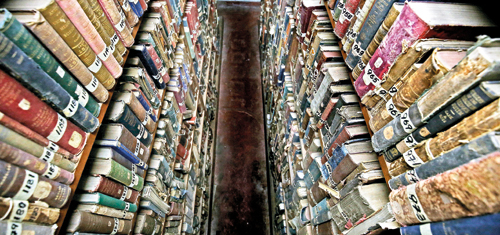 Nestling within a historic building is a rare treasure trove of knowledge coming down the ages.
Nestling within a historic building is a rare treasure trove of knowledge coming down the ages.Ordinary is the door within the home of the Sri Lanka Medical Association (SLMA), Wijerama House, in Colombo 7 which gives entry to the Sri Lanka Medical Library (SLML). Walk through this door and an enthralling world of books, collected since 1844, opens up, transporting the reader to unimaginable arenas.

Avicennae’s Canon from the Islamic Golden age
Floor-to-ceiling are books and journals, old and new, some leather-bound, some with hard covers, others worn-out, yellowed or dog-eared. Collector’s items are aplenty, with many first editions and we blink in disbelief at a heavy tome lying before us.
Published in 1608, it is the oldest medical book in the SLML – ‘Canon Medicinae’ of Avicennae described as the ‘Father of Early Modern Medicine’. A Persian polymath considered a great physician, astronomer, thinker and writer of the Islamic Golden Age, an internet search indicates that of the 450 works he had authored, only around 240 including 150 on philosophy, have survived.
More history flows forth as we are shown this book and that……..‘Mankind considered and examined according to The Light of Nature’ (1677); ‘The Genuine Work of Hippocrates’ translated from Greek (1849); ‘Evidence as to Man’s Place in Nature’ by Thomas Henry Huxley (1864) with detailed sketches of skeletons; The collected works of Sir Humphry Davy; ‘The life of Florence Nightingale’ with a photograph of her with her two daughters believed to be one of a kind with her family; ‘Medicinal Plants of Ceylon and Singhalese Medicines in English by G.W. Gabriel Gunawardana in 1917 which had been sold at Rs. 12; the Lancet Volume 1 (1823); the Ceylon Medical Journal Volume 1 (1887-8); the First Textbook of Clinical Medicine in Sinhala and much more.
Rare books on Sri Lanka include Marshall’s Medical Topography of Ceylon, Tennent’s Christianity in Ceylon and works of Pridham, Cordiner and Baldaeus.
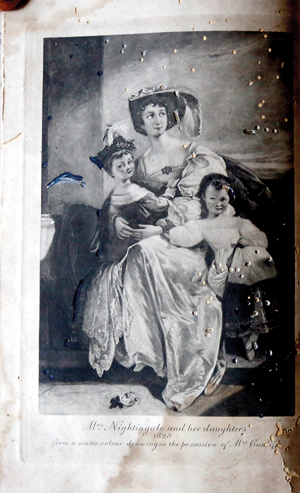 Enthusiastically, the President of the SLML Management Committee, Prof. Neville Perera, Treasurer Dr. Jayantha Jayasuriya, Editor Prof. Laal Jayakody and members Prof. Anoja Fernando and Dr. Lucian Jayasuriya talk of the invaluable books here which have helped in the continuous education of all doctors.
Enthusiastically, the President of the SLML Management Committee, Prof. Neville Perera, Treasurer Dr. Jayantha Jayasuriya, Editor Prof. Laal Jayakody and members Prof. Anoja Fernando and Dr. Lucian Jayasuriya talk of the invaluable books here which have helped in the continuous education of all doctors.
As Prof. Fernando says that a large number of books, among the nearly 5,000 books and 250 Journal titles preserved here may be very rare, due to most books being lost during the Dark Ages around the world, Prof. Jayakody adds that this wealth of material is available for all doctors, government or private, consultant or junior, scattered across the country.
Recalling the time when she was at the helm of the SLMA in 2001, Prof. Fernando harks back to a stop-over in Sri Lanka by the then British Medical Association President Sir Christopher Paine who was on his way to the Triennial Council Meeting of the Commonwealth Medical Association in Penang, Malaysia. When he visited Wijerama House he had also been ushered into the hallowed SLML where he was “quite impressed” by the collection here.
Indicative of the breadth of knowledge of the doctors of yore and their interests outside clinical practice are books other than those dealing with medicine at the SLML including a set of beautiful Bibles, Plantae – Asiaticae Rariories – Unpublished Indian Plants (1831), books about birds, butterflies (1882) and flowers and also botany books with meticulously coloured sketches.
 The dedicated and committed staff, Librarian Sriyani Gomes and Library Assistants L.M.R. Bandara and Nishantha Kathriarachchi, hover around the books like mothers over their children, tenderly looking after them, and are ever-willing to pull out a book or journal without hesitancy, for they know exactly where it is.
The dedicated and committed staff, Librarian Sriyani Gomes and Library Assistants L.M.R. Bandara and Nishantha Kathriarachchi, hover around the books like mothers over their children, tenderly looking after them, and are ever-willing to pull out a book or journal without hesitancy, for they know exactly where it is.
Both the SLML and the SLMA have been inextricably linked, with one or the other either playing host or guest to each other over 131 years of association.
The beginnings of the SLML, believed to be one of the oldest medical institutions in the country, were as the Colonial Medical Library with a membership of 14 on June 1, 1844 with the earliest record of the number of books being 424 in 1847 — a majority being purchased and others being significant donations from the medical greats of those times.
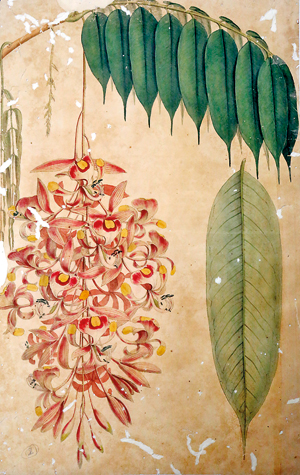 Having pored over the Ceylon Almanac and the dusty Minutes of the Committee of Management of the SLML back in 1982, it is Chest Physician and Historian Dr. C.G. Uragoda, Family Physician Dr. Dennis J. Aloysius and then Professor of Pharmacology, Colombo Medical Faculty, the late Dr. N.D.W. Lionel who had traced the humble birth of the Colonial Medical Library.
Having pored over the Ceylon Almanac and the dusty Minutes of the Committee of Management of the SLML back in 1982, it is Chest Physician and Historian Dr. C.G. Uragoda, Family Physician Dr. Dennis J. Aloysius and then Professor of Pharmacology, Colombo Medical Faculty, the late Dr. N.D.W. Lionel who had traced the humble birth of the Colonial Medical Library.
Stumbling across a cyclostyled document in a file in the library, they have attributed it to Dr. E.M. Wijerama who was Honorary Secretary of the SLML, even though the authorship is not recorded, as having put it together for the centenary celebrations in 1944. Dr. Wijerama later donated his own home to the SLMA with a proviso that the SLML should also get a roof over its head here.
Flipping back the pages of time, Dr. Wijerama had stated that even though there was a Military Medical Library, the first batch of local doctors including Dr. P.D. Anthonisz and Dr. J. Loos, who had been trained in Calcutta and returned to man civil hospitals in 1843, may have felt the necessity for a separate library for themselves. While the Patron of the Military Medical Library was the British Governor, the Colonial Medical Library had to “make do” with the Principal Civil Medical Officer as its Patron.
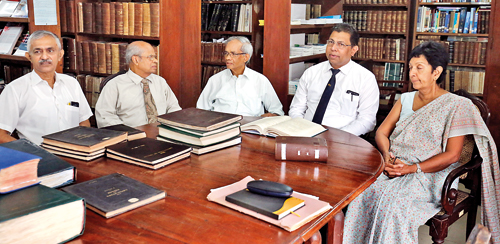
From Left: Prof. Laal Jayakody, Dr. Lucian Jayasuriya, Dr. Jayantha Jayasuriya, Prof. Neville Perera and Prof. Anoja Fernando
Over its chequered history of 174 years, the Colonial Medical Library not only had name-changes to the Ceylon Medical Library and finally SLML, but also led a nomadic life, originating at the Pettah Hospital, the forerunner of the Colombo General Hospital, as the largest group of doctors would have been based there.
By 1880, it moved to the Biology Block of the Ceylon Medical College, then the Anatomy Block facing Maradana Road and finally to the ‘Maha Gedera’ of the medical profession — Wijerama House donated by Dr. Wijerama in April 1964 to the SLMA. Interestingly, the earliest subscription had been two shillings a month and a day’s pay according to the rank of the member, while in its centenary year it had been Rs. 2 a month whatever the rank of the member.
The SLMA, meanwhile, then known as the Ceylon Branch of the British Medical Association and later the Ceylon Medical Association has had very close links with the SLML. It had held its inaugural meeting in December 1887 in the Colonial Medical Library, after which the association was a ‘guest’ living within the Colonial Medical Library.
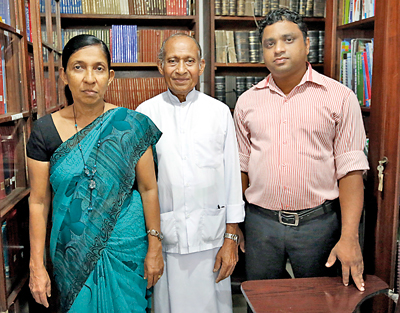
SLML’s carers: Sriyani, Bandara and Nishanthi
For a brief five years, the couple had parted company when the SLML was located within the Medical Faculty, to bond again in 1965 under the provisions of the will of magnanimous Dr. Wijerama, with the roles being reversed and the SLML now gaining the status of a most welcome guest.
It is secure within Wijerama House that the SLML has been providing yeoman service, where we find doctors turning the pages of time or in keeping with modernity accessing the internet.
| Help save the books | |
| Down the ages, the Sri Lanka Medical Library has faced many a vicissitude and threat…….amalgamations, difficult periods during the two World Wars and threats of extinction.Fearing for the safety of these cherished books, after the Easter Sunday air-raid over Colombo during World War II, 4,729 invaluable volumes had been ‘evacuated’ for safe-keeping to the Wathupitiwela Hospital.“The threats are still not over,” points out the honorary Management Committee President Prof. Neville Perera, while member Dr. Lucian Jayasuriya adds that the SLML is in “survival mode”.The issue of day-to-day sustainability is causing worry-lines for the Management Committee along with sleepless nights as the books show signs of wear and tear and invasions by silver fish. As such, the Management Committee is seeking at least Rs. 10 million from donors who value the printed word to help preserve the SLML for posterity. Then it can be placed in a fixed deposit and the SLML maintained with the interest accruing from it. “We get an annual grant from the Health Ministry, but we need to think long-term,” says Prof. Perera urging corporates, the medical fraternity and even individuals to help safeguard this national treasure. Please contribute whatever you can, is the plea, with assurances that all accounts are scrupulously audited. Contributions may be sent to Current Account: 003010010419 at the Hatton National Bank, Darley Road, Colombo 10, in the Account Name of Sri Lanka Medical Library. For more details, please contact: Dr. Jayantha Jayasuriya on 0775536502 or email: slmedical.library@gmail.com |


